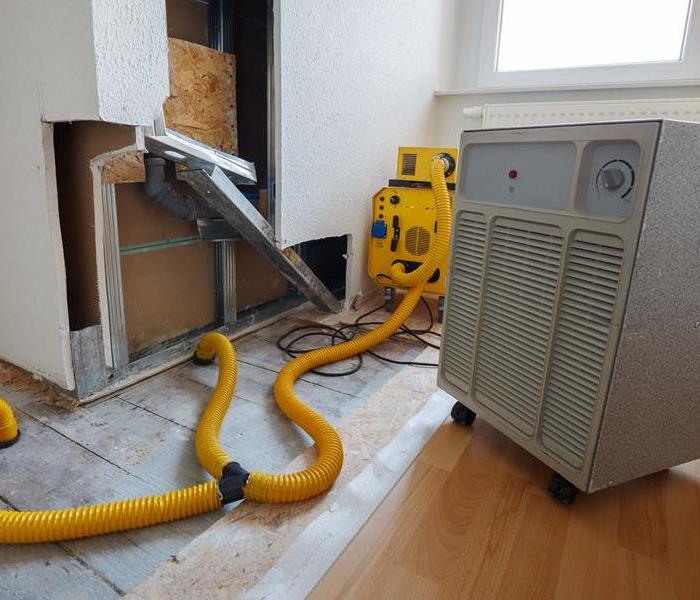Water Damage Restoration Technology: Innovations and Advancements
10/23/2023 (Permalink)
 SERVPRO has technology unique in the restoration industry to restore your property back to pre loss conditions.
SERVPRO has technology unique in the restoration industry to restore your property back to pre loss conditions.
Water damage is a common issue for homeowners, and as technology advances, so do the tools and methods used to restore damaged properties. In this blog post, we will discuss some of the innovations and advancements in water damage restoration technology that are changing the industry for the better.
Moisture Detection
- Thermal Imaging Cameras: These cameras use infrared technology to detect and visualize temperature differences, allowing professionals to identify moisture in areas that may not be visible to the naked eye.
- Moisture Sensors: These handheld devices are used to identify moisture levels in building materials, such as drywall and framing, providing professionals with real-time data to inform their restoration practices.
Water Extraction
- High-Pressure Water Extraction Systems: These systems use powerful vacuums and pumps to remove water quickly and efficiently from flooded areas, reducing the likelihood of further water damage.
- Submersible Pumps: Submersible pumps are designed to remove large volumes of water, making them ideal for use in extreme flooding situations.
Drying Equipment
- Dehumidifiers: Dehumidifiers remove moisture from the air and surfaces, reducing humidity levels to promote faster drying times and prevent mold growth.
- Air Movers: Air movers are high-powered fans that circulate air to speed up the drying process and promote evaporation.
Air and Surface Sanitization
- UV-C Light Systems: Ultraviolet-C light systems use a special type of ultraviolet light that damages the DNA and RNA of bacteria and viruses, effectively killing them and sanitizing the air and surfaces.
- Ozone Generators: Ozone generators produce ozone, a gas that breaks down bacteria and viruses on surfaces and in the air.
Structural Drying
- Heat Drying Systems: Heat drying systems use specialized heaters and fans to increase the temperature and airflow in affected areas, promoting faster drying and reducing the likelihood of mold growth.
- Desiccant Dehumidifiers: Desiccant dehumidifiers use a special drying agent to remove moisture from the air, making them ideal for use in cold or humid environments where traditional dehumidifiers may not be as effective.
Remote Monitoring Technology
Environmental Monitoring Systems. These systems use sensors and cameras to monitor temperature, humidity, and other environmental factors in real-time, allowing professionals to adjust their restoration practices as needed. Remote monitoring apps allow homeowners and restoration professionals to monitor the drying process and receive alerts about changes in environmental conditions or potential equipment malfunctions.
Technology is transforming the water damage restoration industry, enabling professionals to respond to emergencies more efficiently and effectively than ever before. With an array of new tools and practices at their disposal, they can quickly assess and address water damage issues, minimizing the extent of the damage and reducing the cost of recovery. As technology continues to evolve, the potential for even more innovative and effective solutions will emerge, creating safer and more resilient homes and communities.





 24/7 Emergency Service
24/7 Emergency Service